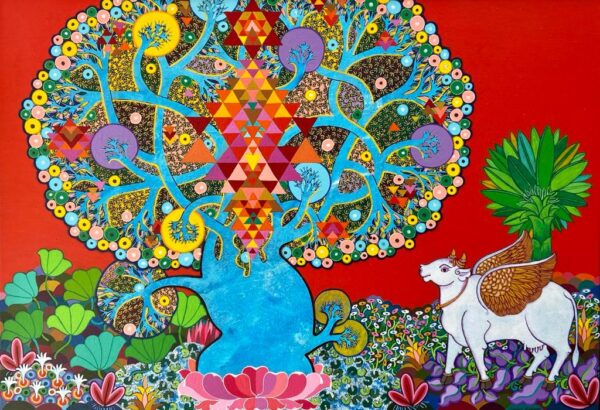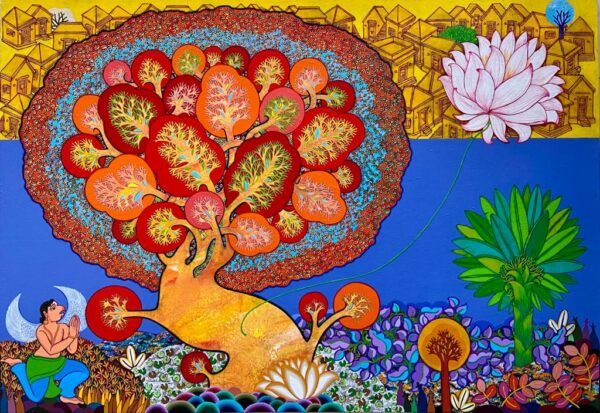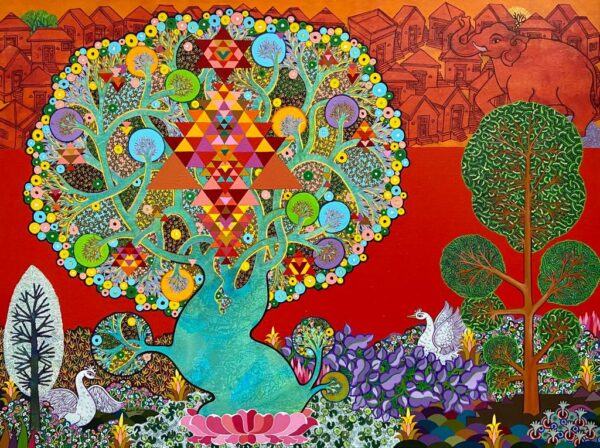
Morkonda Chandra Shekar is a well-known painter from South India. He was born in 1989 in a small temple town.
His works are interpretations of his own experience, existed through time and places. His rural town is embedded with many religious and diverse cultures. His experience with different cultures of people, faith and totem in religious context, with popular objects Trees and goddess became his subject for work of art. In India Plants occupy an important place in Hindu mythology. As every nation has its own set of sacred plants like neem, Banyan, mango, pipal etc. These plants played a major role in sense of sacredness in Hindu religious context with deity kali. Each of his works reciprocates with symbolism from Hindu mythology to interpret the beliefs, and totem of such sects or the sense of sacredness. His choice of objects are popular icons from Hindu mythology like Trishul, Sri-chakram from tantric, and deity Kali. Kalpavriksha, the tree of abundance – forms a common motif in his work. The representations of nature in general, including goddess, became semi-devine beings in hindu, jain and buddhist pantheons, and their images were positioned in the temple of points of transition from worldly to sacred spaces. His paintings express these sentiments and project a landscape that is filled with symbolism and metaphors.




